Exercise of exposure to degrees of temperature./Ejercicio de la exposición a grados de temperatura.[ENG/ESP]



Saludos mi querida comunidad de Hiveblog, hoy vengo a hablarles sobre la temperatura de color, como es su función y como está compuesta, siendo este un tema que tiene que ver con mi profesión como cinematografo, ya que la temperatura de color es el motor principal de esta profesión, siendo concientes que la temperatura de color es el nombre técnico en el campo cinematográfico de la luz blanca.

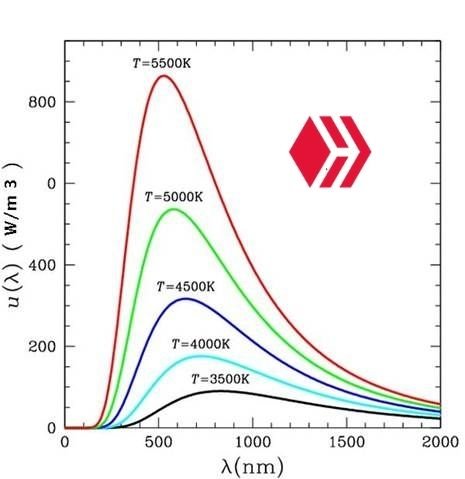

But before continuing with the common term "White Light", the first thing we are going to ask ourselves is if does white light exist?
Pero antes de continuar con el término corriente de "Luz blanca", lo primero que nos vamos a preguntar es si ¿la luz blanca existe?.



Well I tell you that white light does not exist, white light is a mixture of a series of wavelengths, through a phenomenon called dispersion, which is the ordering of wavelengths.
Pues les comento que la luz blanca no existe, la luz blanca es una mezcla de una serie de longitudes de ondas, que por medio de un fenómeno llamado dispersión, que es el ordenamiento de las longitudes de ondas.



The primary colors of Audiovisual and cinema are described and defined in light wavelengths, which are made up of three large groups.
Los colores primarios del Audiovisual y del cine se describe y se definen en longitudes de ondas luminicas, los cuales se componen en tres grandes grupos.

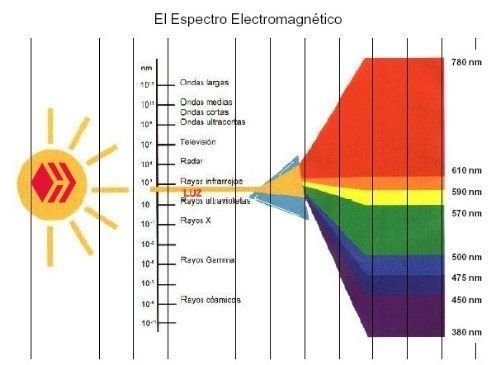

a) Average wavelengths, which are the Green lengths.
b) Short wavelengths are the blue lengths.
c) Long wavelengths are the red colors.
a) Longitudes de ondas medias, que son las longitudes Verdes.
b) Longitudes de ondas cortas, son las longitudes azules.
c) Longitudes de ondas largas, son las Longitudes rojas.

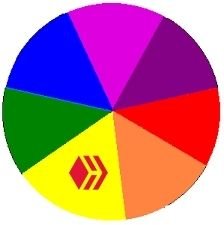

The concept that they have taught us of white light is a subject that has to do with human sight in terms of the visible reproduction of light in the human eye and its chromatic reproduction, on the other hand there are theorists who speak of the result of the sum of seven colors of the spectrum and frequencies of the wavelength and refraction as white light, there are even experiments where the three spectral tones R, G, B intersect, and when joining them in visible appearances white light is formed, leaving one side the multiple dominance, of color temperature in its surroundings.
El concepto que nos han enseñado de la luz blanca es un tema que tiene que ver con la vista humana en cuando a la reproducción visible de la luz en el ojo humano y su reproducción cromática, por otro lado existen teóricos que hablan del resultado de la suma de siete colores del espectro y frecuencias de la longitud de ondas y la refracción como la luz blanca, incluso existen experimentos donde se cruzan las tres tonalidades espectrales R,G,B, y al unirlas en apariencias visibles se forma la luz blanca, dejando un lado las múltiples dominancia, de temperatura de color en su entorno.

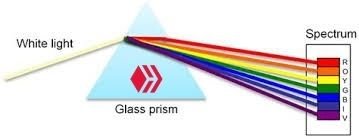

I clarify dispersion as a scientific phenomenon carried out by Newton when he did an experiment, where he let the sunlight pass through a prism and extracted from various filters that he had, wavelengths that that prism gave him, and that is how he began to enumerate the colors of the rainbow.
Aclaro la dispersión como un fenómeno científico realizado por Newton cuando hizo un experimento, donde dejó pasar la luz del sol por un prisma y extrajo de varios filtros que tenia, longitudes de ondas que ese prisma le otorgaba, y así fue como empezó enumerar los colores del arcoiris.

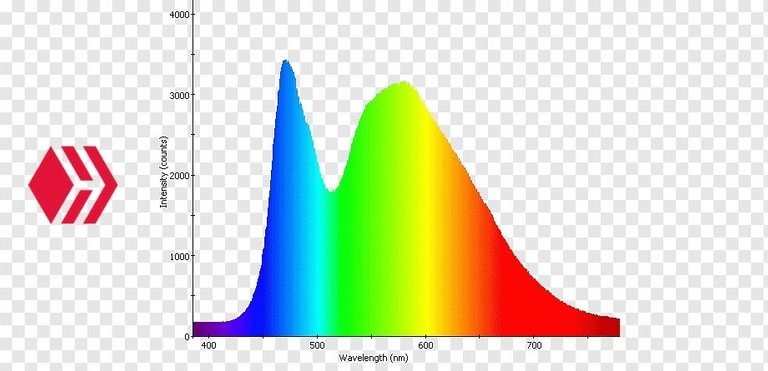

The color temperature is a spectral composition emitted by an electromagnetic emitter, the spectral composition refers to which wavelengths of the visible spectrum are being emitted and to what extent, with which, the wavelength in some way expresses the heat or the trend of heat, or the predominance of some colors that may be being illuminated by some source of light, artificial or natural. We will know which color predominates over another through its chromatic representation index, at 100%, at 60%, at 30%.
La temperatura de color es una composición espectral emitida por un emisor electromagnético, la composición espectral se refiere a cuáles longitudes de ondas del espectro visible están siendo emitidos y en qué medida, con lo cual, la longitud de onda de alguna manera expresa el calor o la tendencia del calor, o la predominancia de algunos colores que pueden estar siendo iluminados por alguna fuente de luz, artificial o natural. Vamos a saber que color predomina sobre otro a través de su índice de representación cromática, al 100 %, al 60%, al 30%.



The color temperature has to do with the characteristics of the material that is being used as an electromagnetic emitter.
La temperatura de color tiene que ver con las características del material que se esta utilizando como emisor electromagnético.

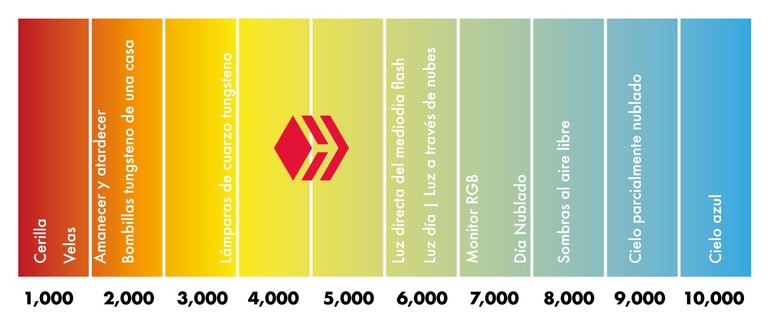

The warm temperature varies between 3200 degrees Kelvin and 4350 degrees Kelvin (that exact), from there up to 6000 Kelvin we observe cold light.
La temperatura cálida varia entre los 3200 grados kelvin y los 4350 grados kelvin (así de exacta), de ahí hasta los 6000 grados kelvin observamos la luz fría.

Now we are going to do an exercise of the exposure to degrees of temperature of a body to make a sample of the different color temperatures.
Ahora vamos hacer un ejercicio de la exposición a grados de temperatura de un cuerpo para hacer una muestra de las direfenrentes temperaturas de color.

Steps
Pasos

- It is gripped with a glove and a pliers or a multi-technique tool.
- Se agarra con guante y un alicate o una herramienta multi tecnica.

- Squeeze a piece of iron
- Aprieta un pedazo de hierro.

- You expose it to fire and observe the variation in temperature, the variation in color, checking that it is a cold temperature and a cold one.
- La expones al fuego y observa la variación de temperatura, la variación del color, comprobando, que es una temperatura al y una fría.

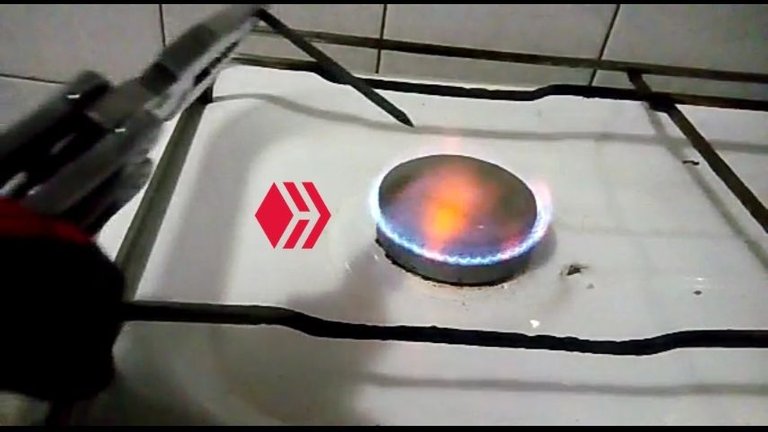
- 1

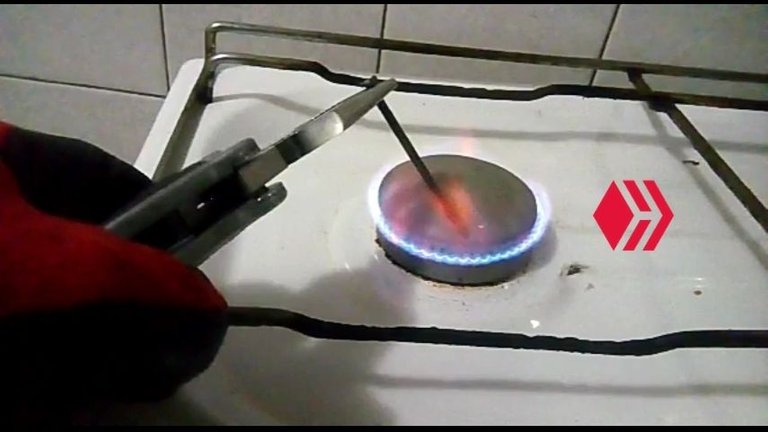
- 2

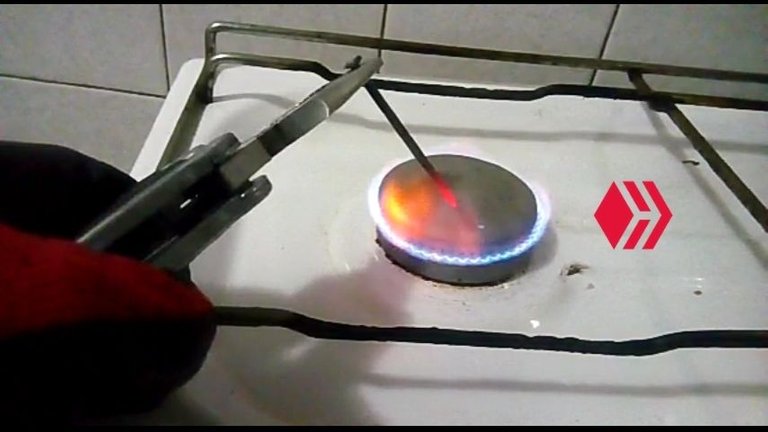
- 3

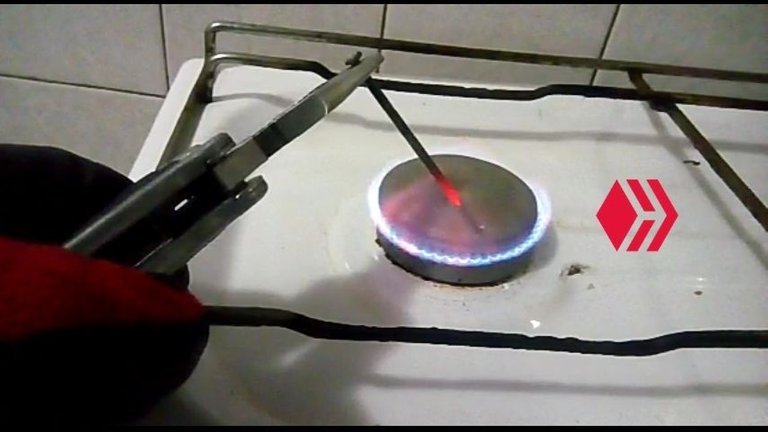
- 4

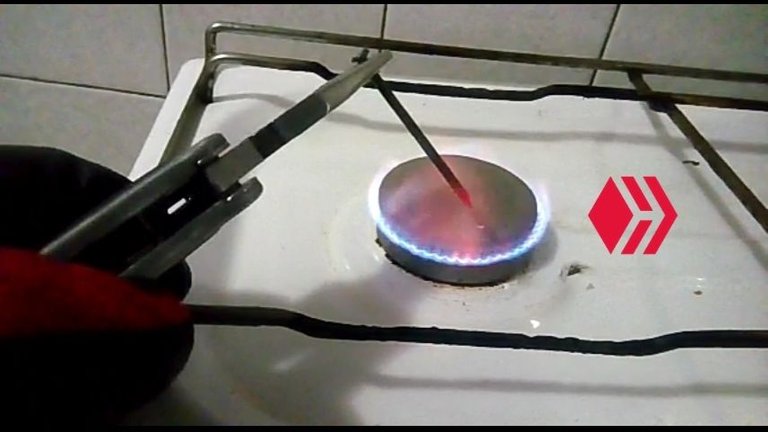
- 5

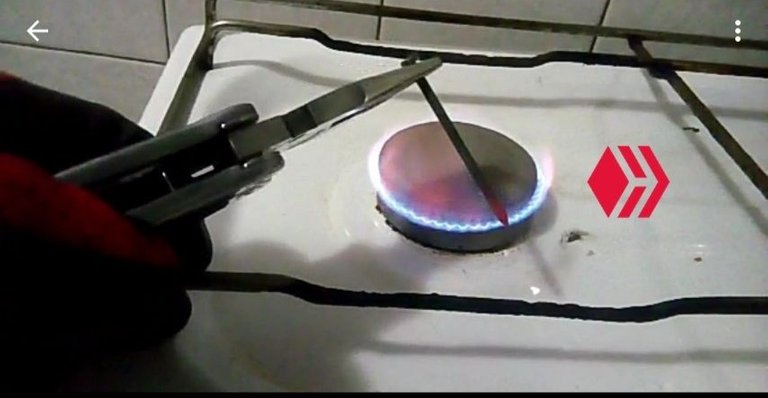
- 6

The way in which this nail lights up when exposed directly to the candle and the heat that your body is raising, is known as color temperature. The color change from red to orange (warm color temperature) and then once removed from the fire it changes to a slight blue color (cold color temperature) until it becomes a black body.
La forma en que esté clavo se enciende al ser expuesto directamente a la candela y el calor que su cuerpo va levantando, se le conoce como temperatura de color. El cambio de su color rojo a naranja (temperatura de color calida) para luego una vez retirado del fuego pasa a un leve color azul (temperatura de color fría) hasta volverse un cuerpo negro.

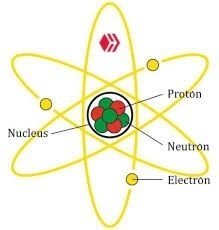

When the electron rises a higher energy level it needs to absorb a photon and when the electron reduces a lower energy level it releases and emits a photon which is a particular of electromagnetic radiation which in turn is a particular of light and in turn the containment or release of energy as light, it is temperature, it is color.
Cuando el electrón sube un nivel de energía más alto necesita absorber un fotón y cuando el electrón reduce un nivel de energía más bajo libera y emite un fotón que es una particular de radiación electromagnética que a su vez es una particular de luz y a su vez la contención o liberación de energía como luz, es temperatura, es color.

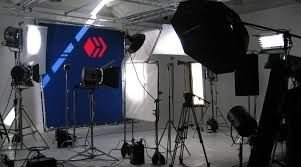

With all this scientific information, the technology to generate the manufacture of different luminance emitters, and thus try to control that apparently white light, this is an important characteristic in the dimension of color science. The other part is the technique, the technological part of thinking that color from the manufacture of the emitter itself, from the light source itself that will emit different wavelengths for certain measurements, for which we have the IRC, color rendering index , which is measured thanks to the thermocolorimeter, which not only measures the temperature but also the color rendering index. The other aspect is the light arrangement, this can be emitted directly from the lamp, light bouncing off a white, gold, silver surface or a shiny glass that reflects light like the mirror.
Con toda esta información científica la tecnología para generar la fabricación de distintos emisores de luminancia, y así tratar de controlar esa aparentemente luz blanca, está es una característica importante en la dimensión de la ciencia del color. La otra parte es la técnica, la parte tecnológica de pensar ese color desde la fabricación del propio emisor, de la propia fuente luminica que va a emitir distintas longitudes de ondas para ciertas medidas, para la cual contamos con el I.R.C., índice de reproducción cromática, que es medida gracias a al termocolorimetro, que no solo mide la temperatura si no también el índice de reproducción cromática. El otro aspecto es la disposición de luz, esto puede ser emitida directo de la lámpara, luz con rebote de una superficie blanca, dorada, plateada o un cristal brillante que refleja luz como el espejo.

In this way I conclude my explanation of what color temperature is and how it comes to be used or materialized for my profession as a cinematographer.
De esta forma concluyo mi explicación de lo que es la temperatura de color, como se es su función y como llega a utilizarse o materializarse a través de la tecnología para mí profesión como cinematografo.

Link to the explanation video:
Link del video de la explicación:

https://twitter.com/ManaureMundo/status/1378777383977771010
Buenas, Su post ha sido propuesto para ser votado a lo largo del día por el witness @cervantes. Un saludo.